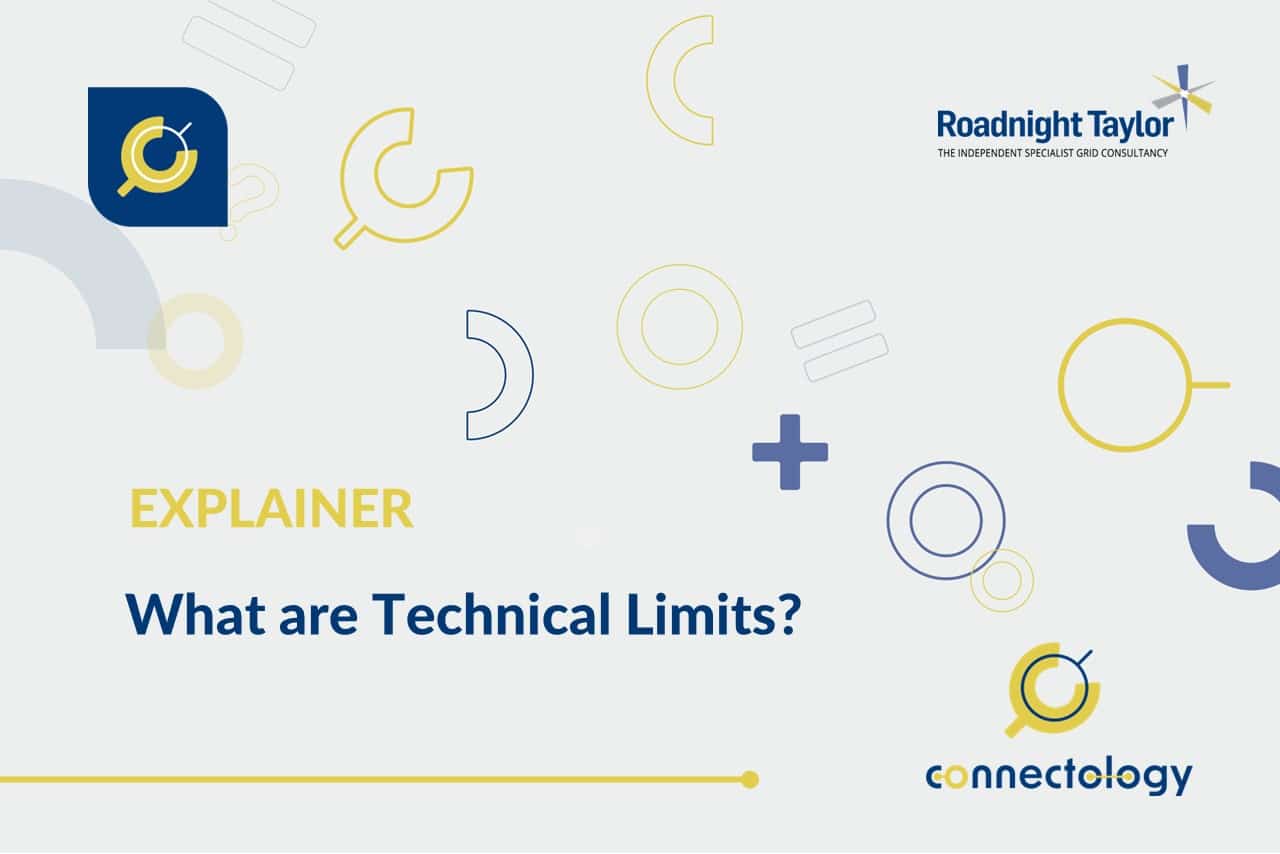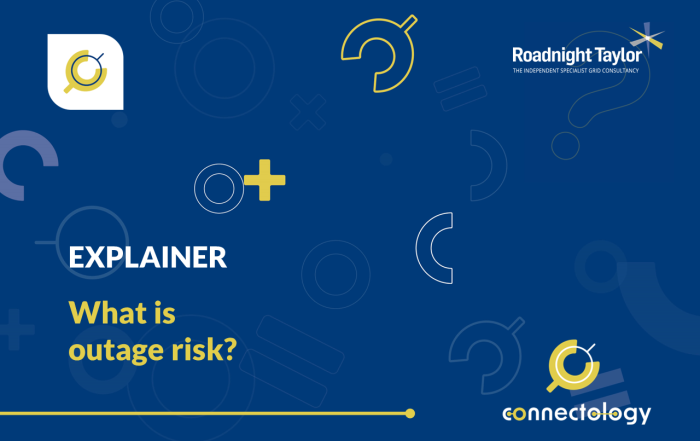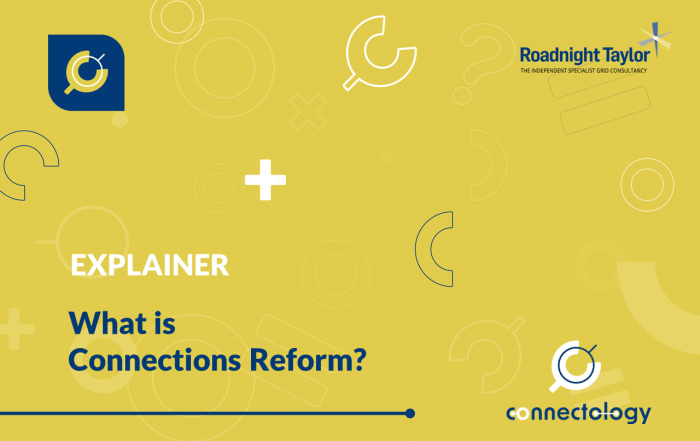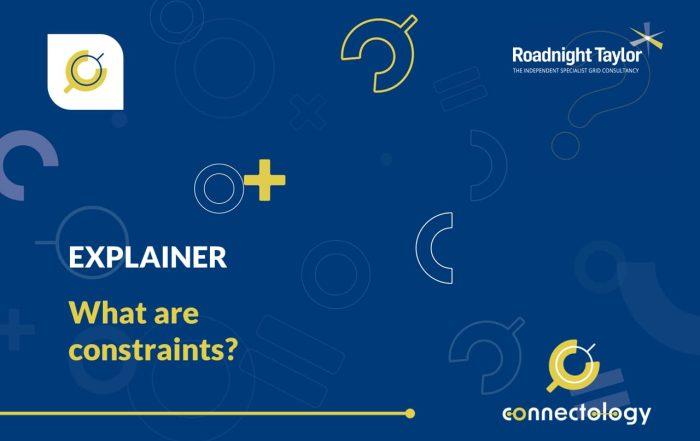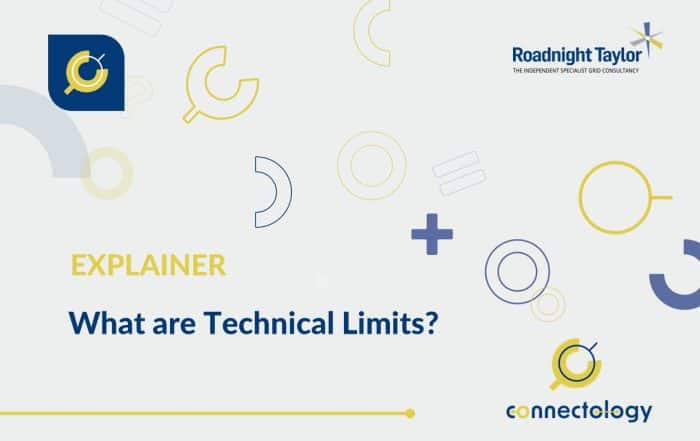What are ‘Technical Limits’ in grid connections?
Technical Limits in grid connections is the process being rolled out by Distribution Network Operators (DNOs) and National Grid Electricity System Operator (NGESO) (as part of the ENA’s 3-point plan), starting at the end of 2023, to allow distribution schemes to connect before large scale transmission reinforcement work has finished.
Article by Pete Aston – acknowledged T/D boundary expert
Pete joined Roadnight Taylor from WPD (National Grid Electricity Distribution), the UK’s largest DNO, where he was Primary System Design Manager. He led a team of sixty responsible for all connections and reinforcement of the extra high voltage network, and had oversite of the relationship and interactions with National Grid Electricity System Operator (NGESO) at the Transmission/Distribution (T/D) boundary.
Updated: 31 October 2023

At the time of writing, there are about 500GW of energy schemes in the queue for connection across transmission and distribution. The result of this is that many customers have received offers for connection in the late 2030s, to give time for transmission reinforcement work to be completed.
Along with actions on queue management and treatment of battery storage, the application of Technical Limits will allow faster connections for many distribution customers. Note that Technical Limits is not applied to direct transmission connections, which will have opportunities for entering into non-firm connections directly with NGESO.
What are ‘Technical Limits’?
The idea behind Technical Limits is simple. If the power flow through a Grid Supply Point (the interface between the transmission and distribution networks) is kept within a MW certain level, then schemes connecting to the GSP won’t impact on the transmission system. This allows distribution customers to connect prior to transmission reinforcement work completing.
A site connecting under Technical Limits will have non-firm access to the network (i.e. may have their output curtailed), until the transmission reinforcement works identified for their connection have been completed. So by nature, Technical Limits is a temporary measure, lasting until potentially the end of the 2030s.
How will ‘Technical Limits’ be implemented?
The Technical Limits will be implemented through an scheme owned by the DNO. NGESO will provide the DNO with the appropriate limits for power flow through the supergrid transformers (SGTs) at the GSP. The DNO will monitor the power flow through the SGTs and will control the output of customers connecting under the Technical Limits scheme, so that the limit is never exceeded. There will be a LIFO (Last In First Out) stack, to put customers in commercial queue order, in terms of who is curtailed in which order.
There will also be a requirement for customers and DNOs to provide visibility and control of distribution generation connecting under Technical Limits to NGESO. This will be done via links between the DNO and NGESO control systems.
Technical Limits will only be rolled out at GSPs which meet the criteria for each of the phases of the roll-out:
- Phase 1a. Transmission Thermal Enabling Works must be required at the GSP, with no fault level works. It will be a single user GSP, with customers with long connection timescales.
- Phase 1b. Transmission Thermal Enabling Works must be required at the GSP, with the fault level headroom <1kA. It will be a single user GSP, with customers with long connection timescales.
- Phase 2. Site with two or more transmission customers (so two or more DNOs, or one DNO and one or more direct transmission connections). These are complex sites and require interaction with multiple parties.
What are the timescales?
Phase 1a. DNOs are currently writing to customers with accepted offers on Phase 1a GSPs, asking them to provide an Expression of Interest (EOI) in October and November 2023 to be included in the process. It is unknown when the DNOs will issue the revised offers.
Phase 1b. DNOs and NGESO will agree revised Bilateral Connection Offers (BCAs) in Q4 2023, with DNOs writing to customers in November / December 2023 asking for an EOI.
Phase 2. Sites will begin to be selected in Q1 2024 for review.
Is it too good to be true?
Curtailment
The headline of Technical Limits is great—connect early without waiting for transmission reinforcement. The downside is that a site will be curtailed (i.e. have a reduced output – see our ‘What is curtailment in electricity networks and how does it work?’ explainer). It is unknown what the curtailment will be for each site until the DNO issues the revised offers with associated curtailment reports. The actual curtailment will of course depend on which sites actually proceed to connection.
Transmission costs and securities
An earlier connection date via a Technical Limits connection won’t change the cancellation liabilities, securities and SGT reinforcement charges associated with the connection however an earlier connection date may mean customers face some of these liabilities (such as the wider cancellation charge) earlier. Once connected, transmission liabilities for distribution connected generators fall away and so while customers should assume that whatever works were presented to them through the Project Progression process will still apply, the timing of the liabilities may make a significant difference.
DNO connection works
Whilst Technical Limits will allow some sites to connect prior to transmission reinforcement works, the DNO will still need to undertake the connection works on the distribution system, including any distribution reinforcement works. The higher the voltage, the longer the works take to schedule and complete. And of course, DNOs have a limited resource for delivery, so will not be able to do everything at once.
GSPs identified so far (updated 31/10/2023)
The table below shows which GSPs have been identified in which phase of the Technical Limits roll out so far.
| DNO | Phase 1a | Phase 1b | Phase 2 |
| ENWL | Bredbury, Kearsley, Kirkby, Penwortham, South Manchester | None | Potentially: Harker, Heysham, Hutton |
| NGED – South Wales | Cardiff East, Grange, Pyle, Rassau, Upper Boat 132kV, Upper Boat 33kV | TBC | TBC |
| NGED – South West | Alverdiscott, Bridgwater, Exeter, Indian Queens, Taunton | TBC | TBC |
| NGED – West Midlands | Bustleholm, Feckenham, Kitwell, Nechells East, Penn, Port Ham, Willenhall | TBC | TBC |
| NGED – East Midlands | Berkswell, Bicker Fen, Staythorpe, Stoke Bardolph | TBC | TBC |
| NPG – Yorkshire | (Tranche 1) Grimsby West
(Tranche 3) Knaresborough, Saltend North |
Ferrybridge B, Osbaldwick, Poppleton, Skelton Grange, West Melton | TBC |
| NPG – North East | (Tranche 1) Hartmoor, Hawthorne Pit, Saltholme, Spennymoor
(Tranche 3) West Bolden |
Blyth 66kV, Lackenby, Norton, Tynemouth | TBC |
| SP Manweb | Birkenhead, Capenhurst, Kirkby, Legacy | TBC | |
| SSEN Southern | Botley Wood, Bramley, Chickerell, Fleet, Lovedean, Minety | Mannington | TBC |
| UKPN – Southern | Bolney, Ninfield, Richborough, Sellindge | None | Potentially: Canterbury, Kingsnorth, Northfleet East, Little Horstead (new GSP) |
| UKPN – Eastern | Braintree, Burwell, Norwich, Rayleigh | Bramford, Pelham, Sundon, Wymondley | Potentially: Eaton Socon, Walpole |
| SPD Scotland | TBC | TBC | TBC |
| SHPED Scotland | TBC | TBC | TBC |
How can Roadnight Taylor help?
Roadnight Taylor can help clients navigate this new process and to liaise with the DNO in relation to the opportunities and risks under Technical Limits.
To find out more call us on 01993 830571 or send us a message via our contact form.

